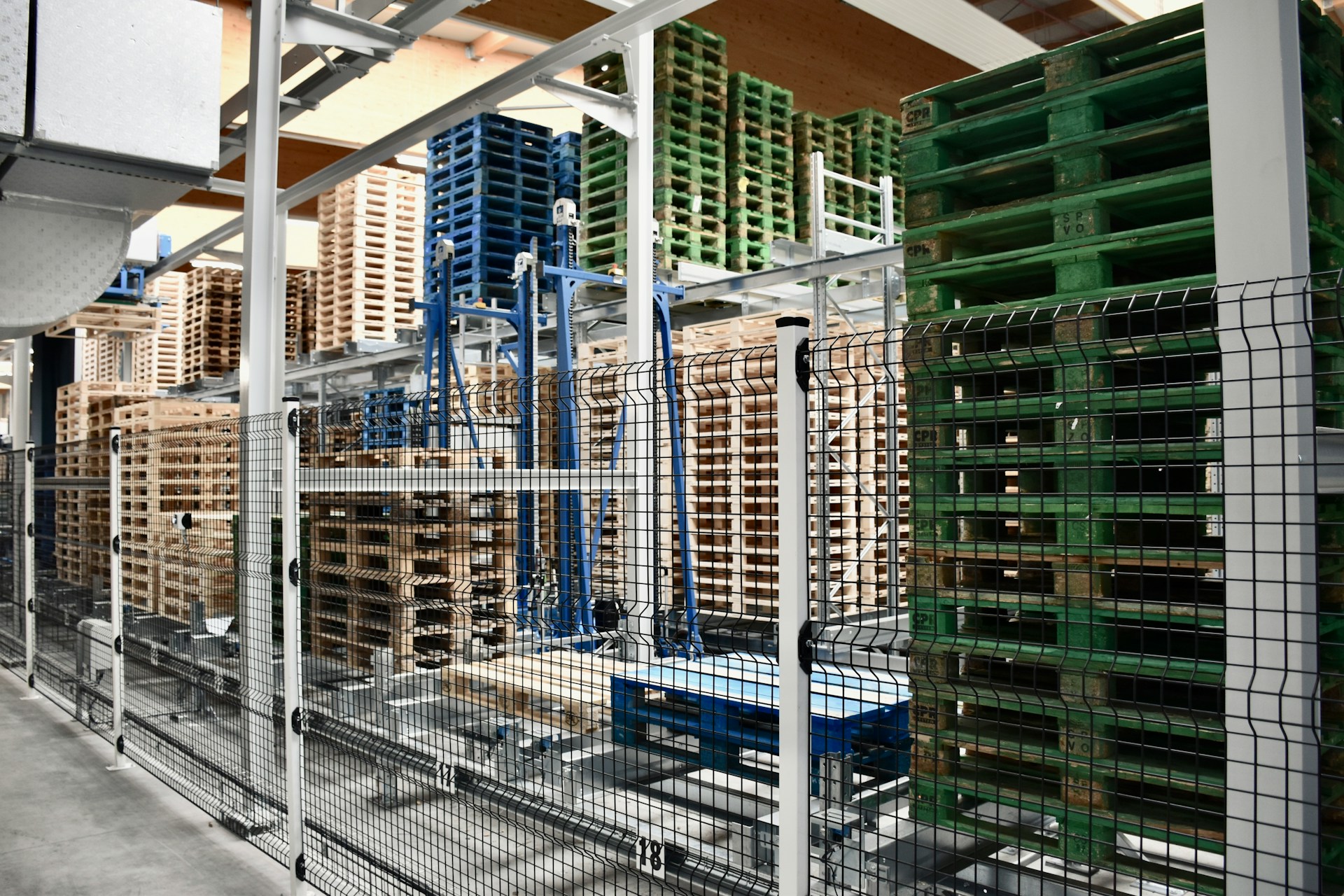For warehouses striving to keep up with growing customer demands and tighter delivery timelines, efficiency is no longer just a goal; it’s a necessity. One standout innovation that’s making this possible is the implementation of automated palletizing systems.
By integrating automation into palletizing processes, warehouses are seeing a remarkable improvement in workflow, time management, and overall logistics efficiency.
This blog dives deep into how automated palletizing systems are transforming warehouse operations. You’ll learn how these systems function, the numerous benefits they offer, and why they’re becoming an essential tool for modern logistics centers.
What Are Automated Palletizing Systems?
Automated palletizing systems are advanced machines designed to stack and arrange goods on pallets without human intervention. Unlike manual palletizing, these systems use robotics, conveyor belts, and sensors to handle tasks automatically, including lifting, rotating, and placing items precisely.
Types of Automated Palletizing Systems
There are multiple types of palletizing systems tailored to specific requirements:
- Robotic Palletizers: These systems use robotic arms to load and arrange products with unmatched precision. Ideal for flexible and complex stacking patterns.
- Conventional Palletizers: These utilize conveyor belts and fixed equipment to handle straightforward stacking processes.
- Hybrid Models: Combining robotic precision with traditional conveyor efficiency, these are perfect for versatile warehouse needs.
By understanding the unique capabilities of these solutions, businesses can select the system that aligns best with their operational requirements.
Benefits of Automated Palletizing in Warehouses
The transition to automated palletizing offers several advantages that contribute to overall warehouse efficiency.
1. Faster Operations
Manual palletizing can be time-consuming, especially for warehouses handling high-volume orders. Automated systems drastically reduce the time required to complete palletizing tasks. A robotic palletizer, for instance, can stack up to 30 cycles per minute, far outpacing human efforts.
2. Improved Accuracy and Consistency
Human error is inevitable in repetitive tasks, such as stacking items manually. Automated systems ensure precision, maintaining consistent stacking patterns and preventing load imbalances that could lead to product damage during transit.
3. Enhanced Worker Safety
Warehouse jobs that involve repetitive heavy lifting can lead to injuries. Automating the palletizing process reduces the physical strain on employees, allowing them to focus on less hazardous, higher-value tasks.
4. Increased Productivity
With automated palletizing, warehouses can operate around the clock. These systems require minimal downtime, enabling businesses to manage higher workloads and meet tight deadlines more effectively.
5. Cost Savings
While the initial investment in automated palletizing systems may seem high, the long-term savings outweigh the cost. Reduced labor expenses, decreased product damage, and minimal operational interruptions all contribute to significant financial benefits.
The Role of Automated Palletizing in Warehouse Automation
Warehouse automation is gaining traction as industries adapt to global supply chain complexities and labor shortages. Automated palletizing is a key component of this shift, seamlessly integrating into broader warehouse management systems.
Streamlining Logistics Efficiency
Whether it’s optimizing shipment preparation or ensuring safe stock handling, automated palletizing systems simplify logistics operations.
By connecting to warehouse automation technologies like inventory tracking and order management software, these systems play a vital role in creating a more cohesive and efficient warehouse ecosystem.
Facilitating Scalability
For businesses anticipating growth, scalability is critical. Automated palletizers can easily adapt to increasing volumes, ensuring warehouses can manage peak periods without compromising efficiency.
Real-Life Applications in Logistics
E-commerce Fulfillment
E-commerce warehouses handle an enormous variety of products daily. Automated palletizing allows these facilities to efficiently group and organize items for shipment, reducing lead times and enhancing customer satisfaction.
Food and Beverage Industry
With strict hygiene and safety standards to meet, the food and beverage sector greatly benefits from automated palletizing. These systems maintain cleanliness and reduce contamination risks during the handling process.
Consumer Goods Distribution
Consumer goods warehouses often need to manage diverse product lines. Automated palletizing systems ensure products are stacked and prepared in an organized manner, making distribution faster and error-free.
Considerations for Implementing Automated Palletizing Systems
While adopting automated palletizing is a step toward warehouse innovation, there are several factors businesses should evaluate:
- Space Requirements: Automated systems may require modifications to warehouse layouts.
- Initial Investment: The upfront costs can be significant, requiring a strategic financial plan.
- Training Needs: Employees need training to operate and maintain these systems effectively.
By addressing these factors, businesses can ensure a smooth implementation and maximize their return on investment.
Transform Your Operations with Automation
The integration of automated palletizing systems isn’t just an upgrade; it’s a competitive advantage. From streamlined processes to enhanced logistics efficiency, these systems play a pivotal role in shaping the future of warehouse automation.
Businesses that invest in such innovations position themselves as leaders in their industries, ready to meet the demands of an ever-evolving market. Are you ready to revolutionize your warehouse operations? Explore advanced automated palletizing solutions and take the first step toward greater efficiency and profitability.





